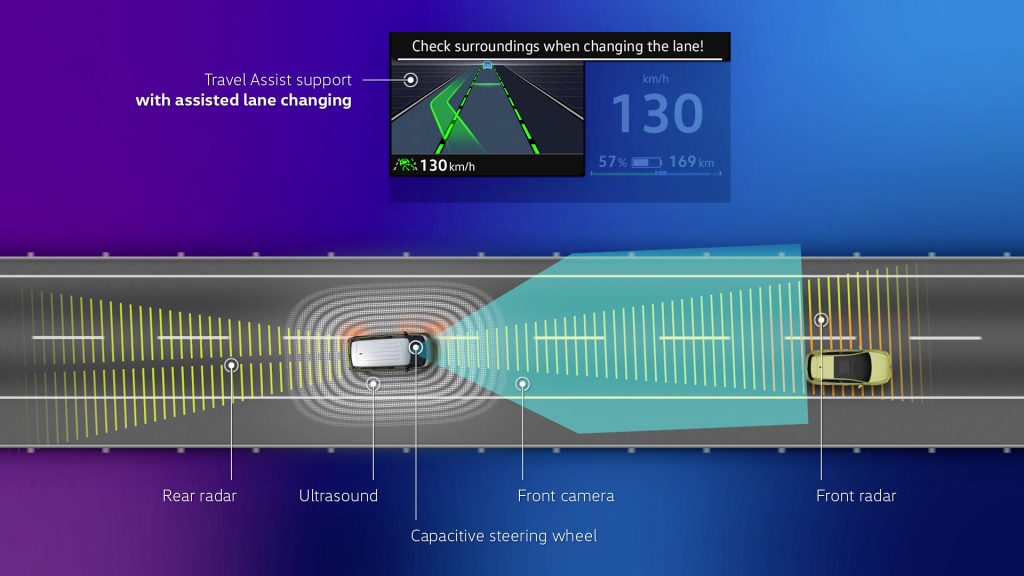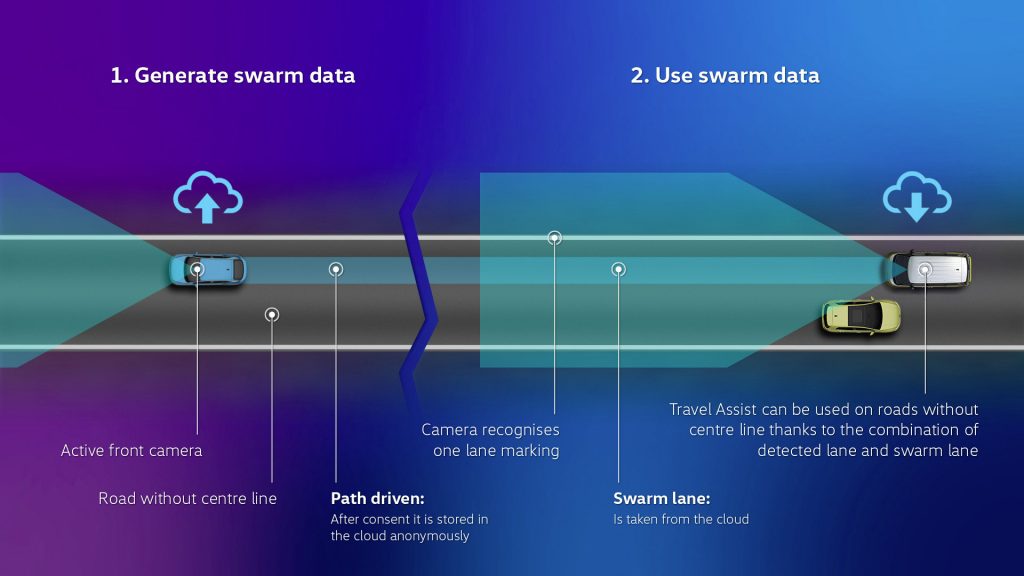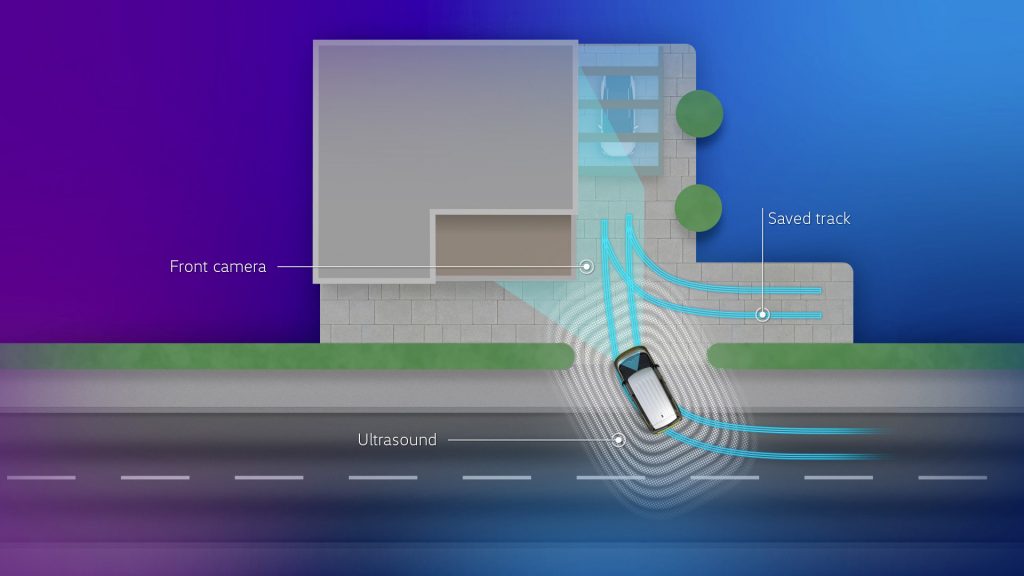
Volkswagen is introducing the ID. Buzz electric van with new intelligent assistance systems aimed at making driving more convenient and safer, in line with the company’s commitment to making the latest technologies accessible to a wide customer base early on. The new ADAS (advanced driving assistance system) features include assisted lane changes on the motorway if the turn signal lever is tapped and the use of swarm data and learning for recurring parking maneuvers.
“We are taking the next step forward on the way to highly automated driving with the use of swarm data in the latest Travel Assist,” explained Kai Grünitz, CTO of Volkswagen Commercial Vehicles and Member of the Volkswagen Brand Board of Management responsible for Development. “This is in line with Volkswagen’s commitment to offer premium technology and innovations in as many models as possible.”
The optional Travel Assist with swarm data and Park Assist Plus with memory function are examples of the latest-generation assistance systems in the ID. Buzz. These systems can also be optionally ordered for all other ID. Models—the ID.3, ID.4, and ID.5.

Travel Assist can keep the vehicle in its lane, maintain a distance from the vehicle in front, and ensure that the vehicle keeps to a maximum speed set by the driver. It uses an adaptive lane guidance system for this, actively keeping the vehicle in the middle of its lane. Travel Assist adapts itself to the driver’s driving style and can also keep the vehicle further left or right in the lane instead of exactly in the center. It comes with predictive cruise control and a cornering assist function, with the vehicle speed can be adapted to valid speed limits and the course of the road (bends, roundabouts, etc.).
If anonymized swarm data is available from other Volkswagen models, the new Travel Assist feature can use just one identified road lane marking to keep the vehicle in its lane. For example, the assistance system is available on country roads without a central lane marking. The availability of Travel Assist is increased even further by swarm data, improving comfort and the level of assistance for the customer.
VW says that, with the use of swarm data, it is taking the next step towards highly automated driving. It is generated by several hundred thousand Volkswagen Group vehicles. The vehicle fleet collects map data, with specific features surrounding the vehicle such as marker lines and road signs. The data is transmitted to the cloud then it is sent to “participating” Volkswagen models currently driving along relevant road sections. The database is continually growing thanks to the large number of participating vehicles.

Travel Assist with swarm data can be used up to the vehicle’s top speed only in combination with a navigation system and an active We Connect license. The online components of Travel Assist with swarm data can only be used when there is mobile network coverage and if the relevant privacy settings have been activated. It is available in Europe, with no word yet on other regions.
When driving on motorways at speeds above 90 km/h (55 mph), Travel Assist with swarm data can actively support lane changes activated by the driver by tapping the turn signal. To complete the operation, onboard sensors must not have detected any objects around the vehicle and the capacitive steering wheel must be able to detect the driver’s hands.
The Park Assist Plus with memory function can be used to teach the vehicle up to five individual parking maneuvers. It remembers parking procedures at speeds below 40 km/h (25 mph) and covering distances of up to 50 m (164 ft), allowing the vehicle to be parked in a carport or garage, for example. The driver must park the vehicle once and save the procedure. The ID. Buzz can then repeat the learned parking maneuver on its own, but the driver should “monitor the situation.”

After activation in a parking menu, Park Assist Plus can search for a parking space and carry out the parking maneuver. When driving past parking spaces, the system detects suitable parallel parking spaces at speeds of up to 40 km/h and perpendicular parking spots at up to 20 km/h (12 mph). The driver needs to stop at the selected parking space, press the brake, and activate and monitor the parking procedure.
The assistance system parks the ID. Buzz—steering, accelerating, braking, and changing gear—with the aid of the sensors that monitor the surroundings. It can also continue parking maneuvers started by the driver and complete them if possible—and provide support when driving out of parallel parking spaces.
In addition to Travel Assist with swarm data and Park Assist Plus with memory function, the ID. Buzz features other driver assistance systems. Standard swerve support, oncoming vehicle braking when turning, Driver Alert System, Autonomous Emergency Braking Front Assist with Pedestrian and Cyclist Monitoring, lane keeping system Lane Assist, Dynamic Road Sign Display, and the Car2X traffic hazard alert function, where vehicles inform each other of critical situations. Optional assist systems are Adaptive Cruise Control ACC stop & go, anti-theft alarm system with interior monitoring, Keyless Advanced locking and starting system, Park Assist Plus, Area View, and the lane change system Side Assist.

